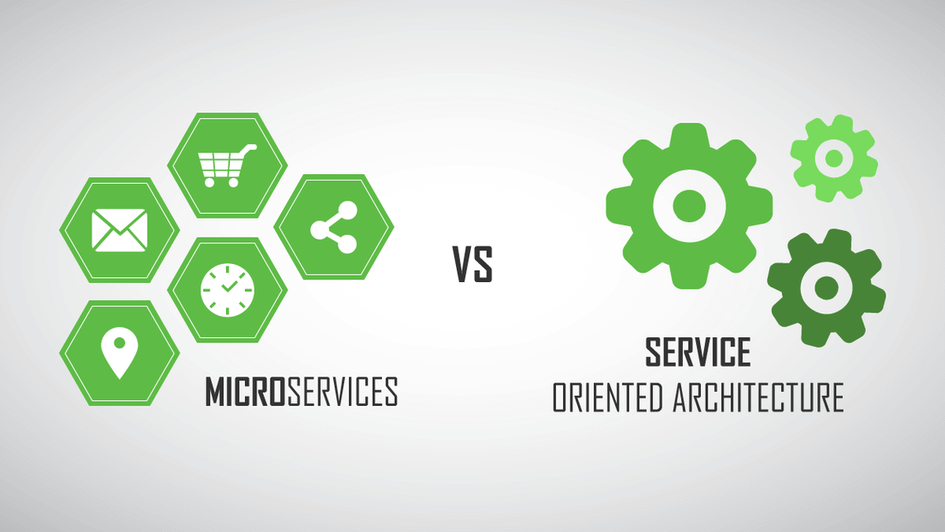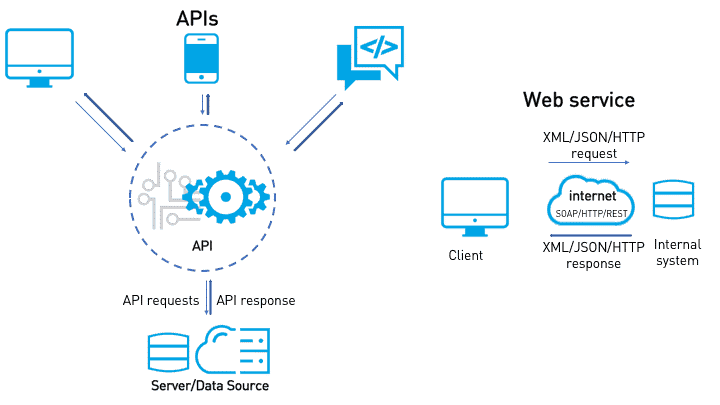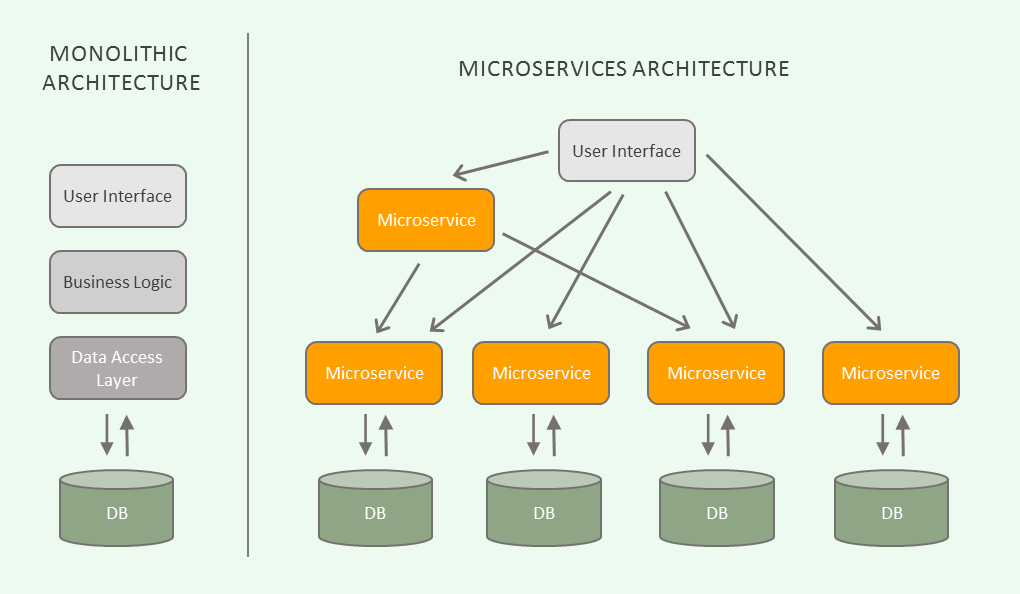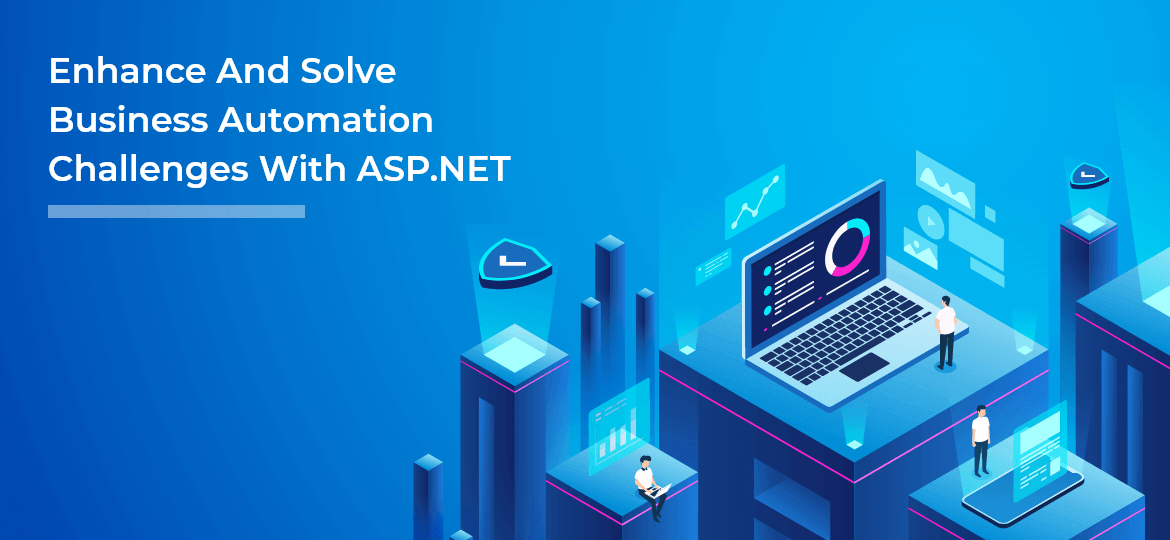
Today’s business environment is extraordinarily competitive. Every company whether it is small or large or no matter what industry it is all are safe from disruption. To reduce this risk new services in order to changes quickly innovates easily and meet competition wherever it arises.
Today’s post will give you deep inside web services and microservices and how they different architecture and development styles to develop to build sources. Before getting into depth, let’s get an idea about what exactly they are and how they function.
What Exactly Is Web Service?
A web service is an application program that runs over the internet and provides information to the client using an organized XML messaging system. XML is a standardized messaging system used for encoding communications over web services.
More specially, a web service is a device–to–device communication on a network. For web service, two things are an important service provider and service requester.

The above diagram provides a view of how a web service really works. Web service provides language transparency it does not matter that the system provides in python, java, or any other. Data is the main component of web service, which is transferred between server and client, and it is nothing but XML (Extensible markup language) is an intermediate language and is understood by many programming languages. XML can be used to exchange data. It is difficult to exchange data between systems over the internet so converting the data to XML can help to solve this problem and create data that can be ready by different types of applications.
What about Micro Services?
Microservice is a software as a unit constructive from the mishmash of handle custom technology they were hacked together. As you can imagine more features you added complicated they became, with the codebase constantly group bigger and hard to work with them. Microservice breaks apart the large software application into several discrete and most importantly independent processes that mean developers can improve software faster and more officially.
Microservices offer standardized modular blocks of codes for an individual process that can be plugged in for a cleaner or to efficient build. Microservices are used to create for user management or user roles, search engines, and social media logins, etc. the most important function is they are independent it means you can write in different programming languages and use different data storage.

Advantages of microservice
- Microservices allow developers to build their application from variant independent sources, which can be easily upgraded, or remove and changed without disturbing the whole application.
- For example, you are creating a file uploading service then you can reuse the code for other projects to that have the use for the same function.
- The next important characteristics of microservice are making a team cross-functional and with more set of skills like user experience, project management, and database management, etc.
Without containerization, it is impossible to build an application that following microservices architecture.
But, How Do They Differ From Each Other?
There both microservices and web services come under SOA (Service-oriented Architecture) category. Microservices are breaking down your whole architecture into small services just as if we make functions in programming. A modular approach makes checking and debugging easier. We can work independently on these services, it makes testing easier.
Web services can have any size. It means doing an Internet of things on a single interface while microservices are built as fragments of smaller services each performing a single function.
Microservices are widely used by developers to create larger and complex applications as they can be easily developed and managed in the form of smaller services, which work together for larger applications having wide functionality.
Wrap Up:
The main motive of microservices is to manage, maintaining, upgrading and building the application by breaking it into smaller fragments, and that pieces that work together and are deployed independently can be removed, changed, or upgraded according to need.
So, Are You Looking Forward To Developing Such Services?
If yes, what are you waiting for? Concetto labs hold skilled and certified developers that hold the best industry experience to develop XML-backed web services. If your business is looking for interactive, fast, and scalable solutions, Concetto labs are the best company to partner with.







 Indonesia
Indonesia
 Botswana
Botswana
 USA
USA
 Italy
Italy
 Panama
Panama




 USA
USA UK
UK Saudi Arabia
Saudi Arabia Norway
Norway India
India Australia
Australia